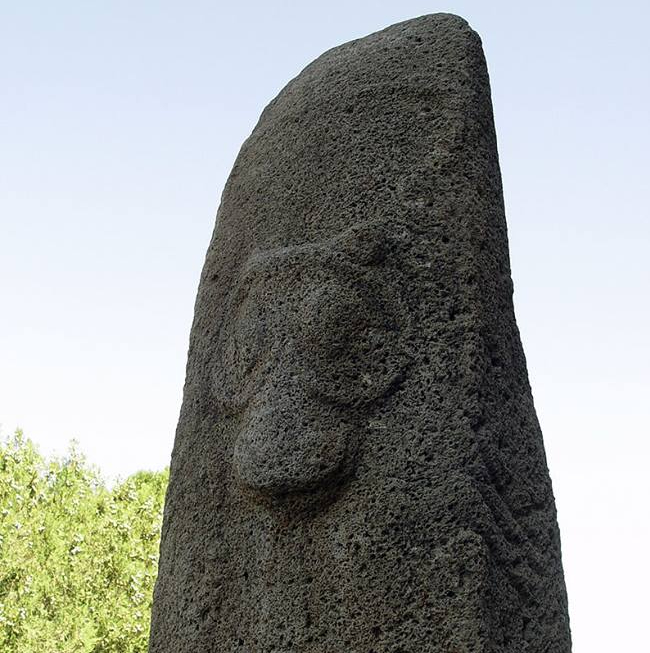
Life on earth is linked to water. Our existence is dependent on water in many ways, and our whole civilization is built on the use of water. The importance of good quality drinking water has been established for years.
From the very early beginning of their existence the Armenians adopted an agrarian way of life. Sedentary agricultural life made it possible to construct villages, cities and eventually states, all of which were highly dependent on water. This created a brand new relation between the Armenian people and water. Armenian settlements have always been located near springs and other bodies of water. Ancient Armenians used to mark the places where they found water by putting huge Dragon stones.


The experience of humankind from the very beginning testifies to the importance and safety of groundwater as a water source, particularly springs and wells. Many rivers and springs were sacred, and endowed with beneficent virtues. The sources of the Euphrates and Tigris received and still receive worship. Sacred cities were built around the river Araxes and its tributaries. Even now there are many sacred springs with healing power, usually called “the springs of light”.
The springs of light were also associated with the dark waters of a pregnant woman. The Armenians believe that Nar was a pregnant woman, the mother from the Dark Waters of whose womb all creation has sprung. To be born in Armenian is “to come to the light world” (Լույս աշխարհ գալ (luis ashgharh gal)), which actually means to come to the world full of light from the mother’s dark womb (dark waters of the womb).
Here is an Armenian song dedicated to Nar.
If Nar is the one who gives birth Aya (Haya) is the one who teaches the way of wisdom and leads in the paths of uprightness: Այա (Aya) or Մեծմամ (Metsmam) is an Armenian word which means great grandmother, Տատ (Tat) is grandmother . Traditionally, grandmothers have been the beacon of light for the family unlike the Armenian men who, together with their women, have always been the protectors of the land and of the family against foreign enemy.
Aya is also Mother Earth who in time transformed into Haya. The letter H is very important for the Armenians, it’s the sound which comes from the lungs when you breathe in or breathe out. I think Aya became Haya with the first breathe, the transformation of the nature into a human being. The Armenians’ endonym is HAY, they call themselves the children of Haya (Aya).
Here is an old Armenian folk song “Aya” in Armenian Artsakh dialect:
http://mp3goon.me/?song=JOXOVRDAKAN%20ERGICH%20%E2%80%93%20MONIKA%20NAZARYAN%20-%20AYA
Her symbol is AK(N). In Armenian language AK(N) can be translated as a wellspring (Ակնաղբյուր), eye and it’s connected with the source (աղբյուր, սկզբնաղբյուր, ակունք, սկզբնապատճառ, սկիզբ, ակնաղբյուր), headwaters (ակունք, սկիզբ, ջրի մակերեվույթ), outfall (ակունք, գետաբերան, սկիզբ), outflow (ակունք, արտահոսում, սկիզբ).

Water carries within itself the ancient story of life on Earth and in the cosmos! Water assisted in the birth of stars, accompanied the formation of the planets, helped form and cool the Earth so that Earth’s creativity could flourish. Water is our link to the planet’s ancient story, to its deep history, to the formation of the planetary web of life.
In its natural integrity, water is an integral part of ecosystems within which water has a mission: to nourish, to heal, and to cleanse, enabling other creatures to flourish.
The creation of the world is expressed in another Armenian tale: a fish named Leviathan arches around the earth. As Leviathan swims and tries to catch its tail, it wiggles, and causes the earthquakes. On Leviathan’s head there is a large diamond, which shines day and night. When he swims, the diamond shines in different places of the world.”
This actually tells us about the creation of the world, cosmic waters, a spiral galaxy of at least two hundred billion stars. That spiral, its coil,squiggle shows the eternity.


The Armenians call their land Harmania – the land of eternal squiggle (har in Armenian is eternal, man is squiggle), and their symbol is the sign of eternity, the well of cosmic waters which gives eternal life to our Earth and our duty is to live in accordance with what has been revealed and support Earth’s (thus, Mothers’) waters to truly fulfill their given mission and destiny of nurturing, cleansing, healing, rejuvenating, mothering, and enlivening the planetary community.

PS: Officially it is accepted that the origin of the word Stamboul goes to “eis tin polin”: they explain that people in the city referred to anything within its old walls as “eis tin polin” or simply “in the city in Greek” and this phrase became “Istanbul” in Armenian and later in Turkish. Such an explanation, first of all, aims to erase the older derivation and meaning. “Eistin pol” in Armenian means “There is water (a wellspring) here”. Obviously, the Armenians settled next to the wellspring and built a city there.

The research is mine (NMV)
Excelente!!!